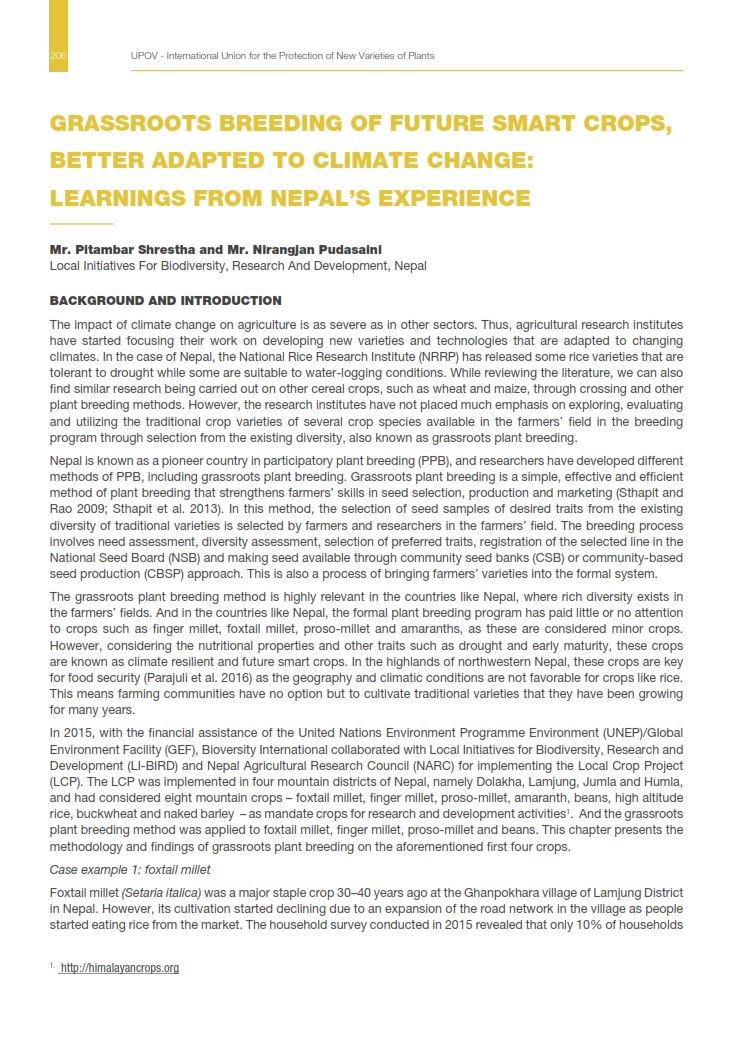Description
The impact of climate change on agriculture is as severe as in other sectors. Thus, agricultural research institutes have started focusing their work on developing new varieties and technologies that are adapted to changing climates. In the case of Nepal, the National Rice Research Institute (NRRP) has released some rice varieties that are tolerant to drought while some are suitable to water-logging conditions. While reviewing the literature, we can also find similar research being carried out on other cereal crops, such as wheat and maize, through crossing and other plant breeding methods. However, the research institutes have not placed much emphasis on exploring, evaluating and utilizing the traditional crop varieties of several crop species available in the farmers’ field in the breeding program through selection from the existing diversity, also known as grassroots plant breeding.
Nepal is known as a pioneer country in participatory plant breeding (PPB), and researchers have developed different methods of PPB, including grassroots plant breeding. Grassroots plant breeding is a simple, effective and efficient method of plant breeding that strengthens farmers’ skills in seed selection, production and marketing (Sthapit and Rao 2009; Sthapit et al. 2013). In this method, the selection of seed samples of desired traits from the existing diversity of traditional varieties is selected by farmers and researchers in the farmers’ field. The breeding process involves need assessment, diversity assessment, selection of preferred traits, registration of the selected line in the National Seed Board (NSB) and making seed available through community seed banks (CSB) or community-based seed production (CBSP) approach. This is also a process of bringing farmers’ varieties into the formal system.





